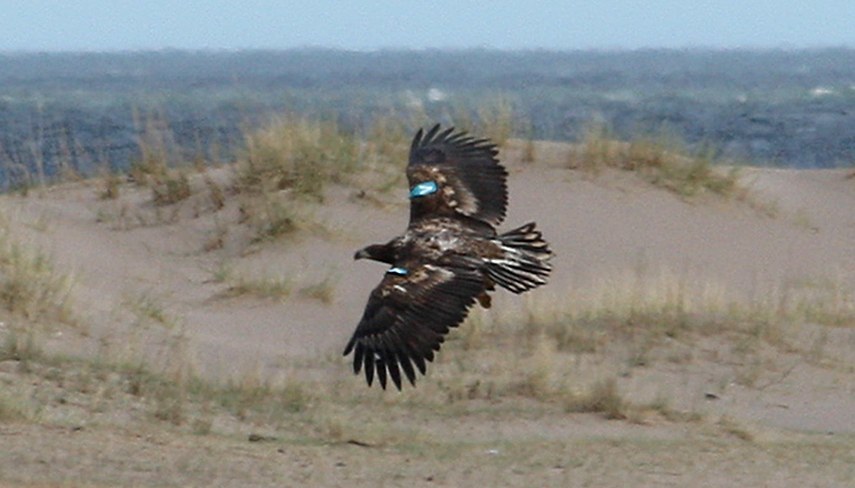Scotland’s east coast population of sea eagles is swelling this week as fledglings are released from a secret location in Fife.
Chicks which were flown in from Norway over seven weeks ago are now big enough to make their own way in the world and are being set free from their purpose-built aviaries.
They are the fourth group of the bird of prey, also known as white-tailed eagles, to be reared in Fife.
The first batch of chicks came to the aviary in 2007 and more have been flown in from Norway each year.
This week some were set free on Tuesday and more will go on Thursday is the latest stage in a four-year project to reintroduce the species, nicknamed flying barn doors due to their size, to the east of Scotland.
Working with Scottish Natural Heritage and Forestry Commission Scotland, RSPB Scotland hopes to bring in 100 sea eagles.
On the west coast their reintroduction began more than 30 years ago.
Their presence on Mull is reckoned to be worth over £1.5m to the local economy.
Sea eagles, which can have a wingspan of up to eight feet, were hunted to extinction in the early part of the 20th century.
The last recorded sighting in Scotland was in 1907 but the species was wiped out in Fife during the 1860s.
Those previously set free in Fife have been spotted at Tentsmuir Forest and Vane Farm nature reserve, where three roosted on the islands in Loch Leven.
They have also been recorded across the north-east, Perthshire and Angus.
One even flew as far north as Mull over the winter before returning to its adopted Perthshire home for the summer.
The sea eagle’s natural habitats are coastal areas, lowland wetlands and estuaries widely available on the east coast.
